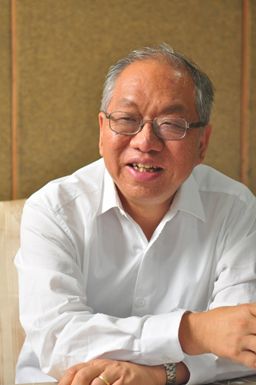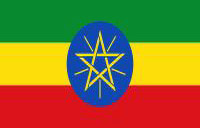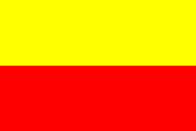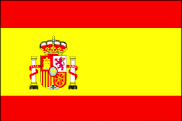
Shing-Tung Yau Ph.D.
National Medal of Science - Mathematics and Computer Science 1997
Mathematician. Differential geometry, Differential equations, General relativity. Calabi-Yau manifolds. Miyaoka-Yau inequality. Founder: Institute of Mathematical Sciences, Chinese University of Hong Kong; Morningside Center of Mathematics at Academia Sinica; Center of Mathematical Sciences at Zhejiang University; Tsinghua Mathematical Sciences Center, China. Adviser more than 50 doctoral students.
Family fled mainland China and Communist takeover when he was an infant. Leader of street gang and often skipped school.
Biography
Generously contributed by Shing-Tung Yau
A complete biography
Major contributions to mathematics
A complete biography
Prof. Shing-Tung Yau was born April 4, 1949 in China. When he was fourteen, he moved to Hong Kong with his family where, after graduating from Pui Ching Middle School, he studied mathematics at The Chinese University of Hong Kong from 1966 to 1969. He undertook graduate studies at the University of California, Berkeley, where his advisor was Shiing-Shen Chern. He received his Ph.D. from the University of California, Berkeley in 1971. Afterwards, he spent a post-doctoral year at the Institute for Advanced Study and then another two years as an assistant professor at the State University of New York at Stony Brook.
Prof. Yau is an eminent Chinese American mathematician. He has made fundamental contributions to differential geometry which have uncovered deep intrinsic geometric structures in an astonishingly wide range of scientific disciplines like differential geometry, algebraic geometry, topology, partial differential equations, general relativity and string theory. In 1976 he proved Calabi's conjecture on a class of manifolds now named Calabi-Yau manifolds, which has now become the geometric ground where physicists build their string theory.
His revolutionary use of the methods of partial differential equations in the area of differential geometry has had a lasting impact on geometry. Prof. Yau is renowned as an energetic teacher and educator. He has advised more than 50 Ph.D. students, with many of them receiving professorships. Meanwhile, Prof. Yau has received a number of awards. These include the Oswald Veblen Prize in Geometry (1981); the John J. Carty Award for the Advancement of Science of the National Academy of Sciences (1981); the Fields Medal in 1982, the John D. and Catherine T. MacArthur Fellowship (1985); the Humboldt Research Award (1991); the Crafoord Prize of the Royal Swedish Academy of Sciences (1994); the (U.S.) National Medal of Science in 1997; the International Scientific and Technological Cooperation Award of China (2003); and the Wolf Prize in Mathematics (2010).
Prof. Yau is currently the William Caspar Graustein Professor of Mathematics and the Chairman of the Mathematics Department at Harvard University. He is also the Founding Director of The Institute of Mathematical Sciences at The Chinese University of Hong Kong in Hong Kong, the Morningside Center of Mathematics at Academia Sinica, the Center of Mathematical Sciences at the Zhejiang University and the Tsinghua Mathematical Sciences Center in China. He is a Foreign Member of the National Academy of Lincei, Italy, the Russian Academy of Sciences, and the Chinese Academy of Sciences. He is a member of the National Academy of Sciences and the Academy of Arts and Sciences. Prof. Yau is one of the most respected mathematicians in the world. He received 10 honorary degrees from top universities around the world, including Harvard, National Taiwan University, Zhejiang University, and The Chinese University of Hong Kong, for his seminal contributions in differential geometry, differential equations and general relativity.
Moreover, Prof. Yau is the Editor-in-Chief of the Journal of Differential Geometry (1980-present), Advances in Theoretical Mathematics and Physics (1997-present), Dynamics of Partial Differential Equations (2004-present), Communications in Number Theory and Physics (2007-present), and the Asian Journal of Mathematics (1997-present).
Major contributions to mathematics
Professor Yau is undoubtedly one of the greatest mathematicians alive. He has made fundamental contributions to mathematics in areas that include topology, algebraic geometry, general relativity, string theory, partial differential equations and differential geometry. His scientific contribution can be summarized in a single theme, which is his insightful vision and ability to combine the theories of nonlinear partial differential equations and differential geometry to tackle various areas of mathematics and physics. The modern geometric analysis, a subject founded by him and his fellow researchers, has uncovered deep intrinsic geometric structures and proved a wide range of astonishing results in geometry, topology, and mathematical physics. His influence to mathematics will continue to glow in the near future.
While it is not possible here to list all of Yau's contribution, we will attempt to highlight a few of his most significant research breakthroughs.
The Solution of Calabi Conjecture: Yau solved the Calabi conjecture, a landmark work in non-linear partial differential equations. His solution to Calabi Conjecture gave a complete understanding of the Ricci tensor on Kahler manifolds. An important application of this solution is the existence of Ricci-flat Kahler metrics, and manifolds with such metrics are now referred to as "Calabi-Yau manifolds", in recognition of this achievement. Calabi-Yau manifolds provide basic vacuum models in string theory, and the Ricci-flat Kahler metrics is ubisque in string theory.
The solution of the Calabi Conjecture also gives the Miyaoka-Yau inequality, in all dimensions, a fundamental inequality in algebraic geometry. A striking application of Yau's derivation of this inequality is the uniformization of varieties that realize the equality in the referred to inequality; applications include the proof of the Severi conjecture of the uniqueness of algebraic structure on the complex projective spaces, algebraic geometric characterization of Shimura varieties, ball quotients, etc..
Solutions of Conjectures in Complex Differential Geometry: Besides Calabi Conjecture, other celebrated conjectures solved by Yau are the Severi conjecture (1976), the solution of Fefferman's equation (1978; joint work with S.Y. Cheng), the Frankel conjecture (1979, in joint work with Y.T. Siu; also solved independently by S. Mori, 1990 Fields medalist), the equivalence between canonical metrics on Teichmuller space (2004, joint with K. Liu and X. Sun);
The Positive Mass Conjecture: Schoen and Yau solved a fundamental problem in general relativity, which asserts that the total mass of an isolated physical system, including both matter and gravitation, must always be positive. This problem dates back to Einstein. Its solution is a major contribution to mathematical foundation of general relativity. It is also crucial for modern developments in the theory of quantum gravity because it indicates the stability of the Minkowski space-time. Schoen and Yau also gave the first rigorous demonstration of how black holes can be formed from the condensation of matter. Their technique of using minimal surfaces also led to a classification theory of manifolds with positive scalar curvature.
Recently, M-T. Wang and Yau, building on the earlier work of C-C. Liu and Yau, defined the notion of quasi-local mass that satisffes the basic properties such as positivity. The notion of quasi-local mass has been searched for a long time by Penrose and Hawkings, and considered by Penrose the top open problem in general relativity.
Minimal Surfaces and Smith Conjecture: Incorporating techniques developed in three dimensional topology, Meeks and Yau solved a long-standing open problem on the embeddedness of classical least area disks. They also applied their solution to the topology of 3-dimensional manifolds, and proved an equivariant version of Dehn's lemma, the Loop Theorem and the Sphere Theorem for 3-manifolds. These results are fundamental to the solution for the Smith conjecture on group action on the 3-dimensional sphere.
Meeks, Simon and Yau generalized this work to embedded spheres and surfaces of higher genus. As an application, they proved the famous conjecture that the universal cover of an irreducible 3-manifold is still irreducible.
Liouville Theorem for Complete Manifolds: Yau pioneered the study of function theory on complete Riemannian manifold. He proved the Liouville Theorem for complete manifolds with nonnegative Ricci curvature. Jointly with S.Y.Cheng, with P.Li, and with Schoen, he advanced his methods of gradient estimate and Harnark inequality to derive sharp estimates of harmonic functions, eigenfunctions, heat kernels and Green's functions. He and Cheng furthered this method to prove the Bernstein type problem of Maximal spacelike hypersurfaces and affine spheres, open problems well known in geometry.
Harnack inequality for Ricci flow: P. Li and Yau derived sharp estimates for eigenvalues and solutions of the heat equation on manifolds. Their proof of the Harnack inequality via a gradient estimate led to many parallel results by Hamilton in nonlinear evolution equations. These types of estimates, now referred to as Li-Yau-Hamilton estimates, played an essential role in the theory of Ricci flow and Perelman's recent proof of the Poincare conjecture.
Mirror Symmetry: This theory, in mathematical term, is a duality from complex geometry to symplectic geometry between mirror Calabi-Yau manifolds, which was originally postulated by physicists as a duality between strong and weak interactions. Its impact on mathematics is parallel to none other than that of the general relativity to mathematics. Yau and his coauthors used mathematical means to verify some important results that was predicted by the mirror symmetry conjecture. Other than the mathematical consequences, which are outstanding in their own right, the bulk of this work also provides a good indication of the validity of mirror symmetry. In his joint work with Strominger and Zaslow, Yau proposed a mathematical program to construct the mirror pairs in the mirror symmetry conjecture. This nominal work motivated many research articles in this direction and Yau and his coauthors continue to lead the way in pursuit of this important physical theory.
Hermitian-Yang-Mills Connections: Uhlenbeck and Yau proved the existence of Hermitian-Yang -Mills connections on stable holomorphic vector bundle over Kahler manifolds, generalizing the existence result of Donaldson for the case of algebraic surfaces. This is a remarkable theorem in that it establishes a canonical geometric structure on a vector bundle based on its algebraic property; it is a vector bundle analogue of the Calabi-Conjecture.
Other areas: Together with his coauthors, Yau also made fundamental contribution to the regularity theory of Monge-Ampere equations. He and Schoen also initiated the idea of applying the theory of harmonic maps to many branches of geometry. He and Stephen Yau gives an effective calculation of Duncan-Mortensen-Zakai equation on nonlinear filtering which has been the major problem in the field.
Yau's impact in science through his own research has definitely placed him in a league of his own. For this he was awarded the Fields Medal (1982), the MacArthur Fellowship (1985), the Crafoord Prize (1994), and the National Medal of Science (1997), among many other accolades. He also holds memberships in the National Academy of Sciences, the American Academy of Arts and Sciences, the Chinese National Academy of Sciences, the Russian Academy of Sciences, and the National Academy of Lincei, Italy.
Professor Yau is not just one of the greatest researchers alive: he is also one of the greatest mathematics educators. He has supervised more than 50 PhD students, including such distinguished figures as Richard Schoen (Member of NAS) and Jun Li of Stanford, Kefeng Liu of UCLA (Executive Director of CMS, Hangzhou). He has also mentored many distinguished postdocs, including Brian Greene of Columbia (Director of ISCAP, Columbia), Eric Zaslow of Northwestern, Richard Thomas of Imperial College of London.
Above all, Professor Yau is an education entrepreneur, with a successful record on changing the traditional education tracks. He raised fund to establish mathematics centers and institutes in China: The Institute of Mathematical Sciences at the Chinese University of Hong Kong (1993), the Morningside Center of Mathematics in Beijing (1996), Center for Theoretical Sciences at Taiwan (1997), the Center of Mathematical Sciences at Zhejiang University (2002), the Tsinghua Mathematical Sciences Center in Beijing. All these centers have an international outlook, and provides the local community a "first of its kinds" in their respective regions.
Professor Yau is enthusiastic in promoting creativities, and is courageous in challenging status quo, and is successful in setting up goals for the education community. He co-sponsored and raised funds to establish the Morningside Medal of Mathematics (1998) to honor professional research mathematics, the New World Mathematics Awards (2007) to honor the most creative PhD thesis in China, and S.-T. Yau High School Mathematics Awards (2008) to encourage high school students to look beyond standardized examinations. In twenty years, step-by-step Professor Yau has established a full spectrum of educational milestones to challenge the most gifted to be the most creative, and creates a flagship institute for mainland China, Taiwan and Hong Kong respectively.
In conclusion, Yau's contribution to mathematics and physics goes far beyond his research achievement. His influence in the subject is multi-faceted and well-rounded. With utmost enthusiasm, it is our great pleasure to nominate Shing Tung Yau for the Balzan Prize 2010.
Discover Your Abilities and Aspirations!
 $10 $25 $50 $100 Other
$10 $25 $50 $100 Other
Tax Exempt 501(c)3 Non-Profit Organization
Any Currency
“…the peace that is found in libraries and laboratories…” - Louis Pasteur
Copyright © 2023 Ganga Library Inc. All Rights reserved.;

Photo: Courtesy Dr. Shing-Tung Yau
Name: Shing-Tung Yau
Birth: 4 April, 1949, China
Title: Professor of Mathematics
Affiliation: Harvard University, Cambridge, MA
Citation: "For his fundamental contributions in mathematics and physics. Through his work, the understanding of basic geometric differential equations has been changed and he has expanded their role enormously within mathematics."
Biography
Contributions to Math
Vita
Publications
Books
Images
External Resources Text: The Emperor of Math
Videos: Shing-Tung Yau
Shing-Tung Yau
Ph.D. Advisor: Shiing-Shen Chern, University of California, Berkeley, 1971
Bearing Laureate's Name: Calabi-Yau manifolds
Miyaoka-Yau inequality













